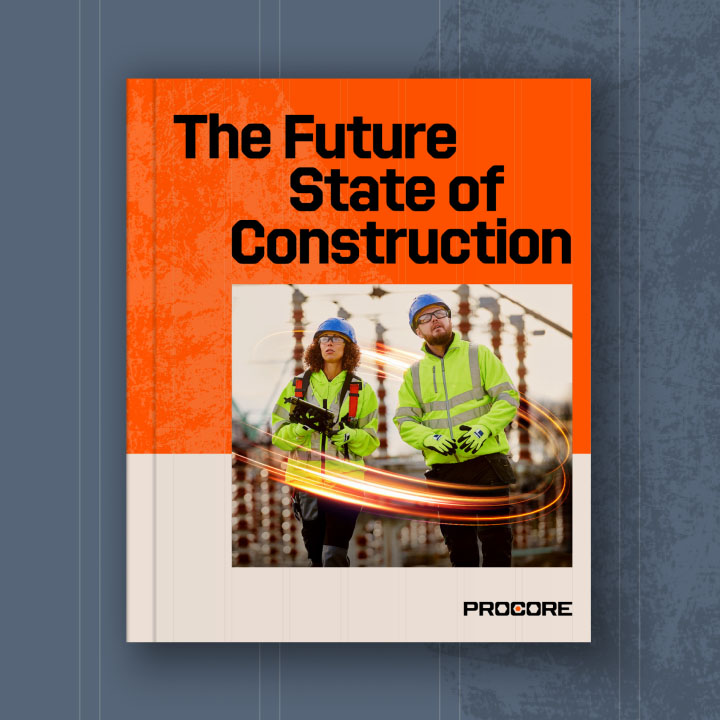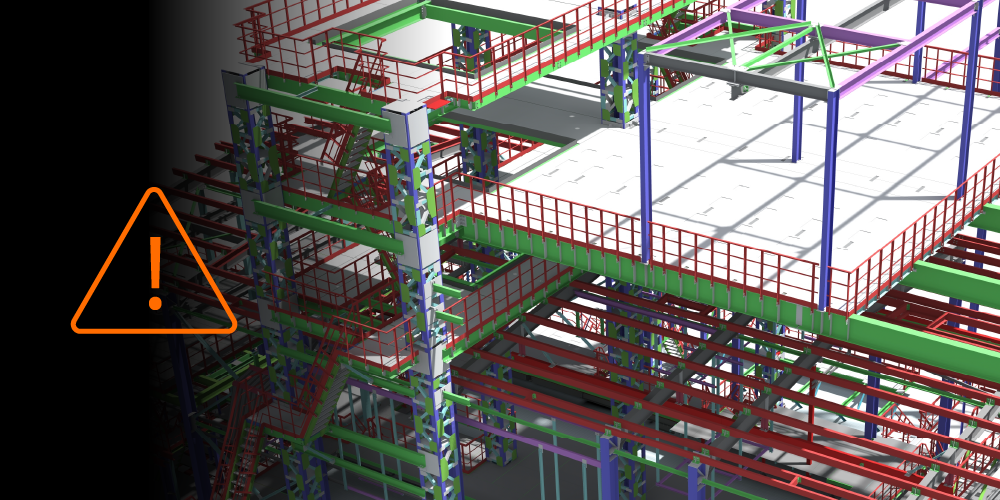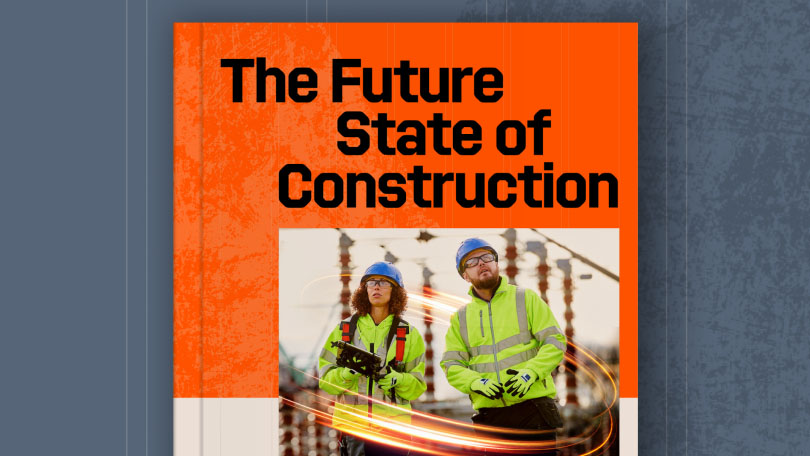Related Articles
— 6 min read
Toolbox Talks That Work: Improve Safety and Communication On Site

Last Updated Aug 28, 2025

Josh Krissansen
47 articles
Josh Krissansen is a freelance writer with two years of experience contributing to Procore's educational library. He specialises in transforming complex construction concepts into clear, actionable insights for professionals in the industry.
Last Updated Aug 28, 2025

Toolbox meetings are part of the daily routine on most construction sites. Short, sharp, and focused, these informal talks help workers reduce risk, stay informed, and put safety at the forefront.
This article explains how toolbox meetings work, what they should cover, and how to run them in a way that makes a real difference on site.
Table of contents
What is a Toolbox Meeting?
A toolbox meeting — or toolbox talk — is a short safety briefing, usually held at the start of a shift. They take place on site and are designed to address the safety risks and responsibilities of the day’s tasks in an informal setting.
Toolbox meetings are led by supervisors, foremen, or safety officers and typically include the full crew and relevant subcontractors. When done right, these meetings improve workplace safety and enhance on-site communication.
Why Toolbox Meetings Matter on Site
Toolbox meetings are a core part of day-to-day site operations. They provide site teams with a structured session to focus on what matters before work begins: safety, clarity, and shared responsibility. Each talk is short, but the impact adds up across a project.
Here are the main objectives of a toolbox meeting:
1. Raise Safety Awareness
Toolbox meetings highlight specific risks linked to the day’s work. This helps keep construction hazards top of mind and reinforces safe decision-making on site.
2. Address Potential Hazards
When teams flag issues early, there’s more time to respond. Toolbox talks help identify site conditions, equipment concerns, or workflow changes that could affect safety.
3. Reinforce a Safety Culture
Frequent, well-run meetings build habits. They show that safety is a daily priority, not just a requirement, and that every team member plays a role in reducing construction risks.
Typical Toolbox Meeting Structure and Agenda
Toolbox meetings are designed for the realities of site work — they’re short, targeted, and easy to run. Their routine nature is what makes them effective. When the site team knows what to expect, it’s easier to keep workers engaged and active.
Each meeting typically lasts 10 to 15 minutes: long enough to deliver important messages, but short enough to avoid disruption.
Meeting frequency depends on the site and the work taking place. High-risk or fast-paced jobs often call for daily toolbox talks. In lower-risk environments, a weekly safety meeting may be enough. What matters is that they happen consistently.
Toolbox meetings are usually held on-site, close to the work area, rather than in an office or off-site meeting room. This keeps the discussion grounded in real-world conditions.
The meeting is generally led by a supervisor, foreman, or site safety officer who understands both the task and the team.
While there’s no set agenda, most toolbox talks follow a simple format:
- A focused safety topic, relevant to the day’s work
- A quick check on site-specific risks or changes
- Time for questions, comments, or observations from the team
This structure helps to address any immediate concerns, highlight hazards and risks, and provide an opportunity for open communication.
Examples of Common Toolbox Meeting Topics
Toolbox talks work best when they focus on a single, relevant issue, ideally something the crew can apply immediately. Choosing the right topic depends on the type of work, recent incidents, and any changes to site conditions or procedures. Here are some common topics covered by toolbox talks:
Working at Heights
Cover fall protection systems, proper harness use, and ladder safety. Address anchor point requirements and rescue procedures for workers who may become suspended. Equipment inspections should emphasise checking for wear, damage, and proper certification dates.
Manual Handling
Demonstrate proper lifting techniques tailored to construction materials and equipment. Include discussion of mechanical aids available on site, team lifting protocols, and early warning signs of musculoskeletal strain.
Electrical Safety
Review lockout/tagout procedures specific to current site conditions. Discuss identification of live services, minimum approach distances, and inspection requirements for power tools and temporary wiring.
Plant and Equipment
Outline pre-start check requirements, exclusion zone dimensions, and communication protocols between operators and ground personnel. Focus on site-specific traffic management plans and blind spot awareness for current machinery.
Recent Near Misses or Incidents
Analyse actual near misses or incidents from the current project or similar sites. Break down what happened, why it matters, and specific preventative measures now in place
Weather-Related Hazards
Address immediate risks based on forecast conditions, including lightning safety protocols, heat stress prevention measures, and modified work procedures during high winds or heavy rain.
Mental Health or Fatigue Management
Address stress management techniques specific to construction pressures. Cover recognition of distress signs in colleagues, available support resources, and the connection between mental wellbeing and physical safety. Emphasise that mental health directly impacts decision-making and risk assessment capabilities on high-risk sites.
See what’s coming in construction over the next decade.
Download the Future State of Construction Report for insights, trends, and innovations shaping the industry over the next 8–10 years.

5 Practical Ways to Make Your Toolbox Meetings More Effective
Toolbox meetings don’t need to be complicated, but they do need to be consistent. They should also be relevant to the work at hand and taken seriously by site workers.
Here are six simple ways to get more value out of your toolbox meetings:
Keep it Focused
Short and on-point meetings will keep attention and momentum; don’t try to cover too much in one session.
Make it Site-Specific
Choose topics that relate directly to the day’s work, such as real incidents, weather conditions, or changes on site.
Involve the Crew
Rotate presenters and invite workers to share their perspectives and personal experiences when appropriate.
Follow up on Issues
When concerns are raised, respond to them. Action builds trust and shows the meeting has purpose.
Know Your WHS Obligations
Toolbox meetings can support your responsibility to consult workers under WHS law. Stay aligned with national and state-level guidance.
Key Toolbox Meeting Requirements for Australian Construction Sites
Toolbox meetings are a simple but powerful way to keep safety front of mind on site. They also play a key role in meeting WHS consultation duties under Australian law.
To meet your WHS consultation obligations under Safe Work Australia’s model Code of Practice, toolbox meetings need to follow certain practices. The chart below highlights key requirements and how to put them into action on site.
| Requirement | How to Apply it On Site |
| Consultation with Workers | Use toolbox meetings to consult workers are site-specific safety matters |
| Regular and Scheduled Meetings | Hold toolbox meetings at consistent internals (daily, ideally). |
| Discuss Relevant Hazards and Controls | Cover current risks, changes, and safe work method statement updates |
| Encourage Worker Participation | Ask for feedback and involve workers in safety discussions |
| Record Keeping and Follow-up Actions | Record attendance, topics, and action items for each meeting |
Pro Tip
Using cloud-based software allows teams to centralise toolbox meeting records, track topic coverage, and communicate changes in real time, ensuring comprehensive compliance documentation without administrative burden.
Well-run toolbox talks make safety part of the workday.
Toolbox meetings are most effective when they’re short, specific, and consistent. When planned well and delivered with purpose, they help site teams work safely, reduce risk, and meet legal responsibilities on site.
Categories:
Written by

Josh Krissansen
47 articles
Josh Krissansen is a freelance writer with two years of experience contributing to Procore's educational library. He specialises in transforming complex construction concepts into clear, actionable insights for professionals in the industry.
View profileExplore more helpful resources

Managing Direct Costs in Construction: How Visibility Drives Profitability
Direct costs define the financial reality of every construction project. They cover the labour, materials, and equipment that drive delivery and determine profitability. But even the best-planned budgets can shift...

BIM Clash Detection: Reducing Rework, Delays, and Risk in Construction
Design clashes can be a significant hidden cost in construction, as each conflict between systems risks expensive rework, project delays, and reduced margins. BIM clash detection empowers teams to identify...

Next-Gen Job-Costing: Ready to Move? 5 Things to Consider Before You Get Started
In this three-part series, Quantity Surveyor turned Financial Solutions Specialist Clint Burgess uncovers the real-world gains for people, processes, and profits when businesses move from legacy to next-generation Enterprise Resource...

From Workarounds to Workflow: Solving Construction’s Legacy Job-Costing System Challenges with Next-Gen Tools
In this three-part series, Quantity Surveyor turned Financial Solutions Specialist Clint Burgess uncovers the real-world gains for people, processes, and profits when businesses move from legacy to next-generation Enterprise Resource...
